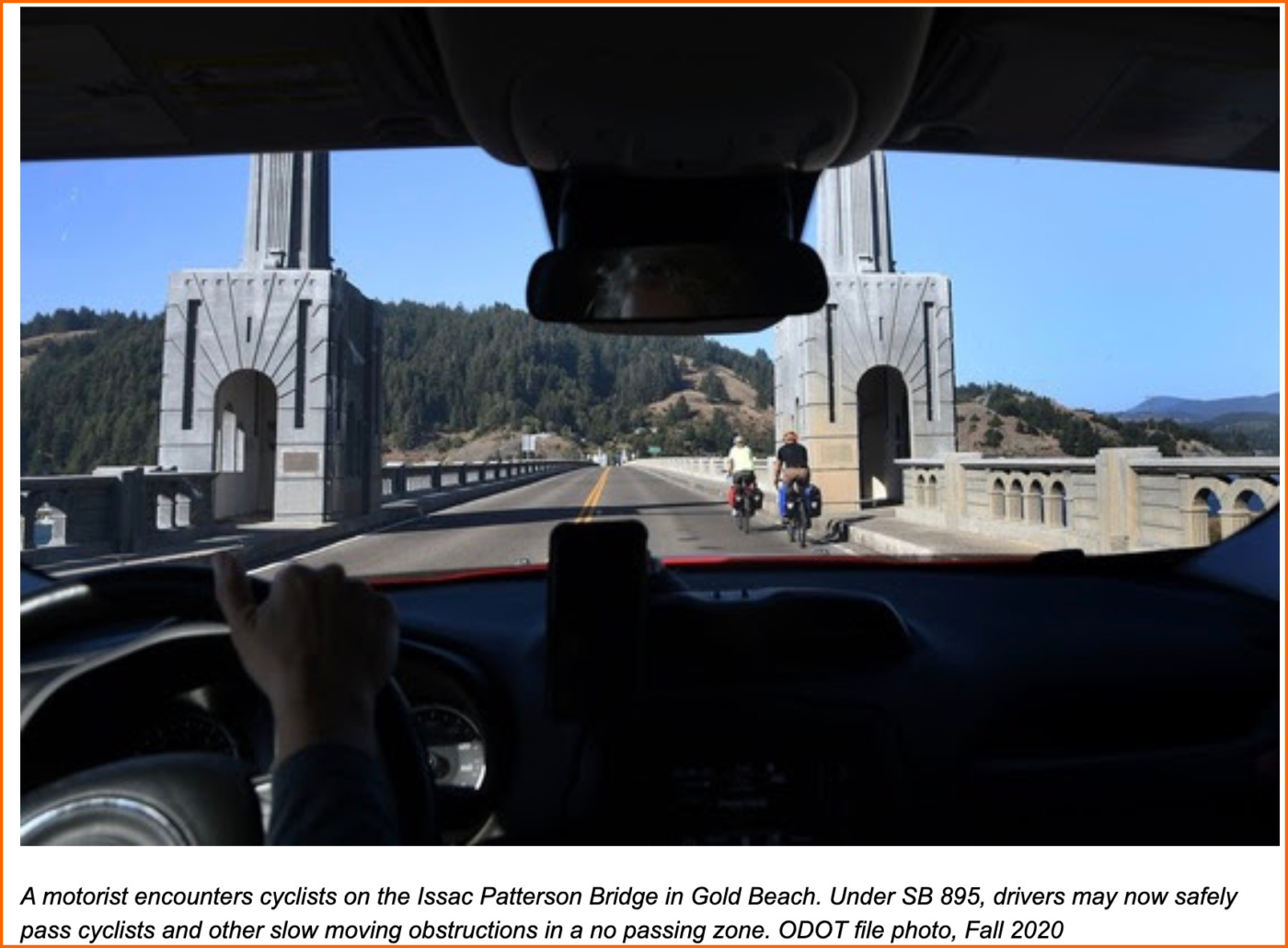The first day of the new year following a regular Oregon legislative session is always fun because that’s typically when new laws go into effect. In 2023, several notable transportation-related laws were passed and are now laws of the land. I’d been meaning to round them up when, lo and behold, the Oregon Department of Transportation sent out a press release today with a handy summary.
ODOT framed the new laws as important progress for road safety. And I agree with them! Three of them in particular are safety-related laws you should be aware of. And a fourth is more of a technical policy change that will have safety implications down the road.
Below (via the ODOT press release) are four noteworthy new laws now in effect in Oregon that will impact our streets:
HB 2095 – Gives all cities in Oregon the authority to use mobile photo radar for traffic enforcement – as long as they pay their own operational costs – and removes limits on the number of hours it can be used. The bill also allows cities to lower the speed limit on certain streets at up to 10 miles below the statutory speed (but not less than 20 mph). HB 2316 – The bill changes definitions and potential penalties for driving under the influence of intoxicants. An “intoxicant” now includes any substance, or combination of substances, that can cause mental and physical impairment. Previously, the definition included only alcohol, cannabis, psilocybin, and controlled substances. Some fines are reduced for people convicted of DUII while riding a bicycle. HB 2099 — The bill makes a variety of changes to transportation laws but notably updates ODOT’s Safe Routes to School program. The bill increases the eligibility radius for Safe Routes to School projects from one mile to two miles, ensures projects serving high schools are equally considered with elementary and middle schools, and allows greater flexibility in determining the grant match requirement for individual projects. SB 895 – Allows drivers to pass in a no passing zone if the driver encounters an obstruction, including a bicycle or other vehicle traveling at a speed of less than half the posted speed limit. The driver must ensure there are no oncoming vehicles and stay at least 5 mph under the posted speed limit while passing.I really like the bicycling under the influence law changes. Whenever the legislature recognizes the vast difference between cars and bicycles in terms of their respective ability to do harm to others, it’s a win for everyone. A similar line of thinking applied to the fight to change the stop sign law for bicycles (a.k.a. “Idaho Stop”). Since bicycle riders have such a different vehicle and operational context, the thinking went, why should they be required to do the same behavior as car drivers at stop signs?
As for the safe passing law, I really hope ODOT makes a concerted effort to educate the community (police, the public, the media) about it. While I think the changes to the law are excellent news, I worry that it will be something hardly anyone understands or knows about.
And of course not mentioned here is HB 3014, the “bike bus bill,” that also passed in 2023. We covered that one in depth and it remains to be seen how/if it has a big impact on how schools spend education funds. I look forward to tracking it and reporting back.


